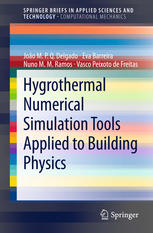

Most ebook files are in PDF format, so you can easily read them using various software such as Foxit Reader or directly on the Google Chrome browser.
Some ebook files are released by publishers in other formats such as .awz, .mobi, .epub, .fb2, etc. You may need to install specific software to read these formats on mobile/PC, such as Calibre.
Please read the tutorial at this link: https://ebookbell.com/faq
We offer FREE conversion to the popular formats you request; however, this may take some time. Therefore, right after payment, please email us, and we will try to provide the service as quickly as possible.
For some exceptional file formats or broken links (if any), please refrain from opening any disputes. Instead, email us first, and we will try to assist within a maximum of 6 hours.
EbookBell Team

4.0
46 reviewsThis book presents a critical review on the development and application of hygrothermal analysis methods to simulate the coupled transport processes of Heat, Air, and Moisture (HAM) transfer for one or multidimensional cases.
During the past few decades there has been relevant development in this field of study and an increase in the professional use of tools that simulate some of the physical phenomena that are involved in Heat, Air and Moisture conditions in building components or elements. Although there is a significant amount of hygrothermal models referred in the literature, the vast majority of them are not easily available to the public outside the institutions where they were developed, which restricts the analysis of this book to only 14 hygrothermal modelling tools.
The special features of this book are (a) a state-of-the-art of numerical simulation tools applied to building physics, (b) the boundary conditions importance, (c) the material properties, namely, experimental methods for the measurement of relevant transport properties, and (d) the numerical investigation and application
The main benefit of the book is that it discusses all the topics related to numerical simulation tools in building components (including state-of-the-art and applications) and presents some of the most important theoretical and numerical developments in building physics, providing a self-contained major reference that is appealing to both the scientists and the engineers. At the same time, this book will be going to the encounter of a variety of scientific and engineering disciplines, such as civil and mechanical engineering, architecture, etc… The book is divided in several chapters that intend to be a resume of the current state of knowledge for benefit of professional colleagues.